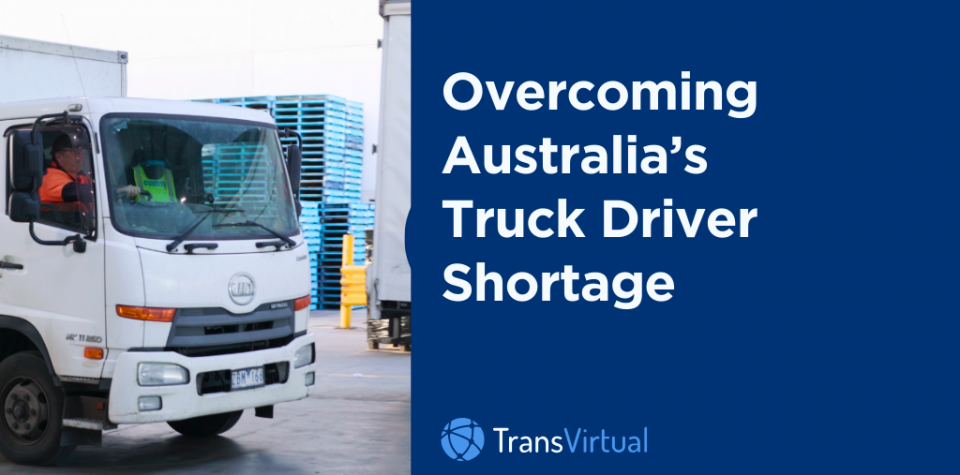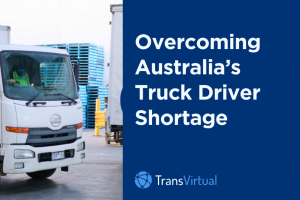Table of Contents
Australia faces a severe shortage of truck drivers that threatens our road freight industry and supply chains. As recently as February 2023, there were over 22,000 vacant truck driver positions posted – in other words, it’s an issue we urgently need to solve.
However, the truck driver shortage issue isn’t a new problem. Many industry experts cite it as an ongoing issue that’s plagued our industries for the past twenty years. But with the recent COVID-19 pandemic and the surge in online shopping, the problem has been exacerbated. As a result, there’s immense pressure on the transportation industry to maintain smoother supply chain operations.
Ultimately, Australia’s truck driver shortage is a multifaceted issue and can’t be attributed solely to something like low pay. According to the online jobs platform SEEK, average salaries for truck drivers range from $105,000 to $125,000 – some companies offer as high as $150,000 to attract more drivers. Yet despite these attractive salaries, the industry still grapples with a significant shortage, especially when it comes to skilled and experienced drivers.
Issues Impacting the Driver Shortage
Experts see several factors contributing to Australia’s truck driver shortage:
1. Aging Population
The Australian trucking workforce, like that of many other industries in many countries, is aging. The average driver’s age falls between 45 and 54 years. Alarmingly, less than 15 percent of drivers are under the age of 30. That means there’s a lack of younger workers entering the industry to replace older drivers as they retire.
2. Lack of Skilled Drivers
Australia’s truck licensing system is a progressive model that requires drivers to move through different vehicle classes over several years. This is unlike other countries where drivers can seek to acquire a particular license and move directly into that role upon completion. The system is also time-based rather than competency-based, which leads to a shortage of genuinely skilled drivers that companies are willing to hire. Companies avoid hiring newer drivers and prefer to hire drivers with many years of experience.
3. Job Perception
The trucking industry also suffers from a somewhat outdated image.
When most Australian jobseekers think of trucking, they imagine long hours, difficult physical labor, and a lack of career progression opportunities. This perception deters potential workers – especially younger men and women – from considering trucking as a viable career option. Some workers will acquire a trucking license only as a backup plan to their preferred career.
What You Can Do to Attract Skilled Drivers
There have been several calls to include truck drivers in Australia’s skilled occupation list. Visa programs facilitate the entry of skilled foreign drivers, addressing shortages in different regions.
As of this writing, the government is also doing its part in recruiting and retaining drivers through apprenticeships and sponsored training.
If you want to address the truck driver shortage in your business, there are also proactive steps you can take today:
Improve Working Conditions
One tip that applies to virtually any workplace is to improve working conditions. Offer safe equipment, fair working hours, clear career pathways, and comprehensive training programs. When you do, you’ll attract and importantly retain skilled drivers. You can also address issues like facility cleanliness, parking options, and insurance concerns to enhance the working environment for your drivers.
Leverage Technological Solutions
Too many businesses operate with outdated, frustrating, and inefficient systems. If you implement more user-friendly logistics software solutions like a comprehensive transportation management system (TMS), you can alleviate any driver shortage woes by increasing your own efficiency, transparency, and accountability.
Tech helps to optimise route planning, monitor driver behaviors, and provides real-time data insights. You’ll make their jobs more appealing and reduce the workload on your drivers.
Take Proactive Measures
The federal government has initiated a heavy vehicle driving apprenticeship program to encourage more new workers to enter the workforce as truck drivers. There are also ongoing industry efforts to promote gender diversity in trucking. Both are helping address the truck driver shortage from a training and recruitment perspective.
As Australia’s trucking industry continues to face a critical driver shortage, your business can take these proactive measures to improve working conditions and enhance training opportunities. By leveraging technological solutions, you’ll benefit from streamlined operations and attract more drivers who recognise your commitment to keeping up with the times.
To learn more about how you can ensure smooth operations in your supply chain and continued growth for your business, check out some of the other great posts on the TransVirtual blog.



